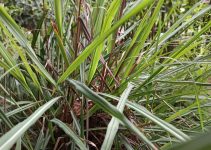अपराजिता / Aparajita flower/ Butterfly Pea
Aparajita flower (also known as Butterfly Pea or Clitoria ternatea) is a beautiful, hardy climber that’s popular in Indian and Southeast Asian gardens. It’s known for its vivid blue (sometimes white) flowers and is often used in herbal teas and traditional medicine. Here are some key gardening tips for growing Aparajita successfully:
Basic Requirements
Sunlight:
- Requires full sunlight (6–8 hours daily).
- Can tolerate partial shade but blooms best with more sun.
Soil:
- Well-drained, loamy or sandy soil is ideal.
- pH range: 6.0 to 7.5 (slightly acidic to neutral).
- Add compost or organic manure to enrich the soil.
Watering:
- Water regularly but moderately.
- Avoid waterlogging; overwatering can cause root rot.
- Water more frequently during hot summer days.
Planting & Propagation
From Seeds:
- Soak seeds in water overnight to speed up germination.
- Sow them 1–2 cm deep in pots or directly in soil.
- Germination takes about 7–10 days.
From Cuttings:
- Take 5–6-inch softwood cuttings.
- Dip in rooting hormone and plant in moist soil.
- Support & Growth
- It’s a climbing vine, so provide a trellis, fence, or support for it to grow upward.
- Grows up to 10–15 feet in the right conditions.
Flowering and Care
Blooming Season:
- Primarily from spring to autumn but can bloom year-round in warm climates.
Deadheading:
- Remove spent flowers to encourage more blooms.
Pruning:
- Trim the plant after flowering to control its size and encourage bushier growth.
- Pest & Disease Control
Generally, pest-resistant, but keep an eye out for:
- Aphids
- Caterpillars
- Use neem oil spray or organic insecticides if needed.
- Avoid overhead watering to prevent fungal infections.
Additional Tips
- Mulch around the base to retain soil moisture and suppress weeds.
- Can be grown in pots or containers — choose a medium to large pot for better growth.
- Fertilize lightly with a balanced organic fertilizer once a month.


